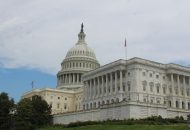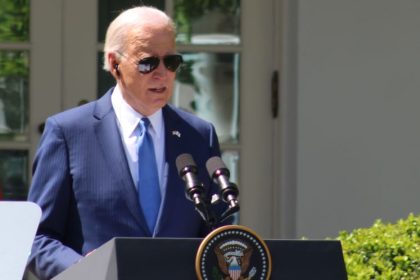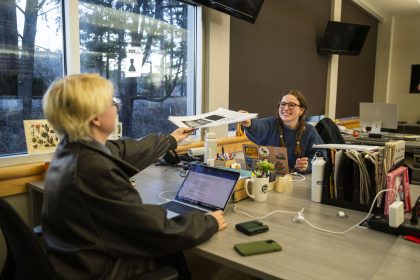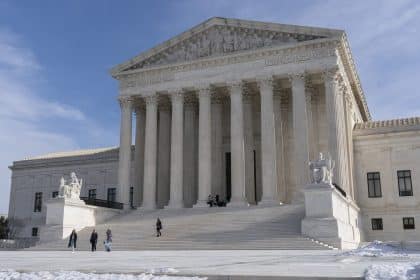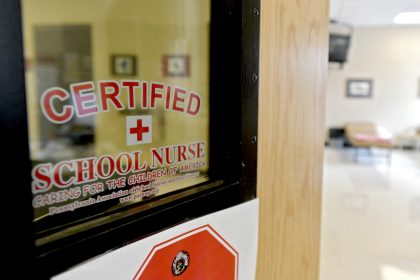‘Free College’ Won’t Fix Barriers to Higher Education, Prosperity
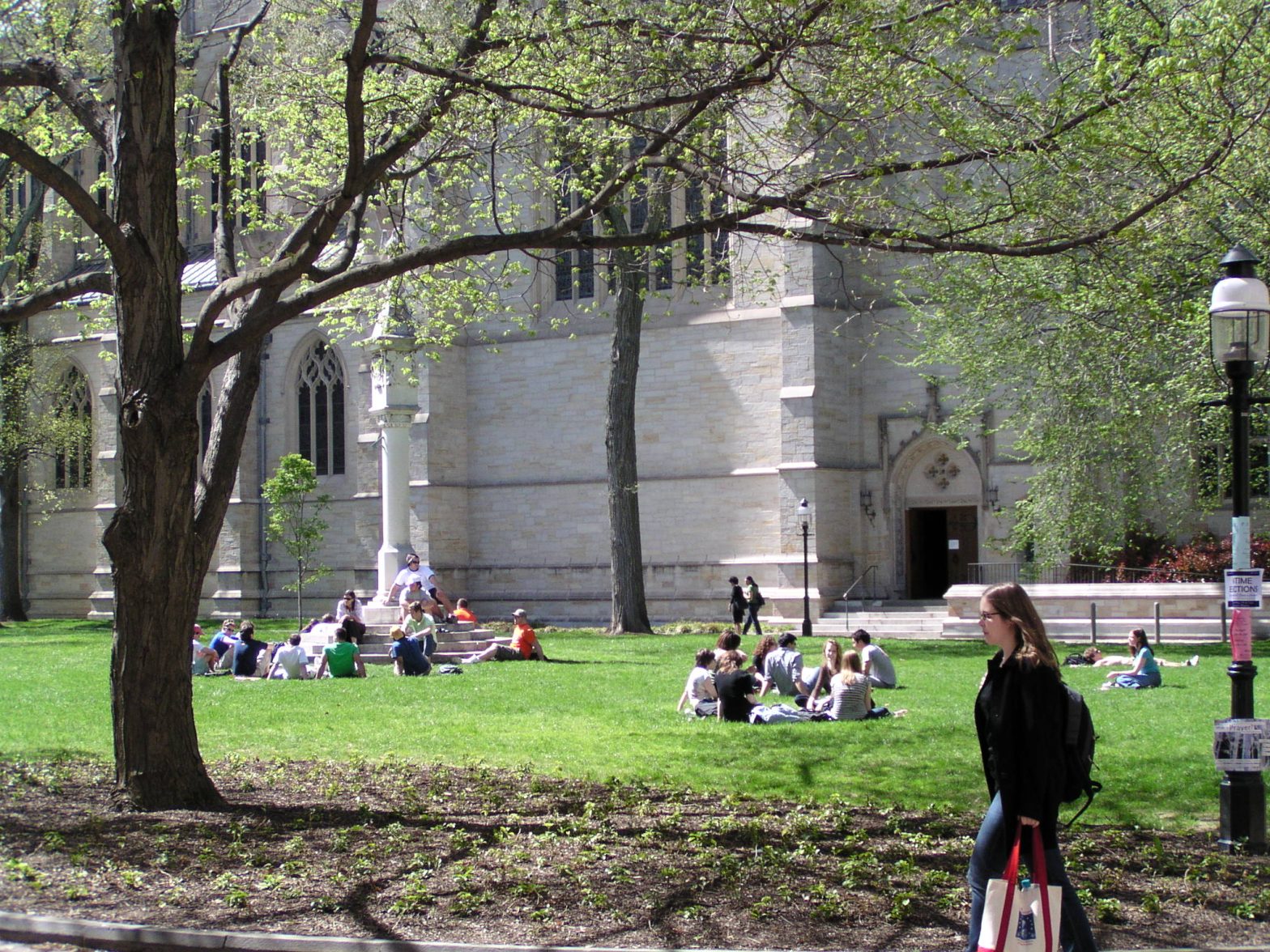
WASHINGTON – On the one hand, it’s easy to see why some in the party would embrace so-called “free” or “debt-free” college and the forgiveness of student loans. Sen. Bernie Sanders, I-Vt., electrified younger voters with his ambitious proposals in 2016, and politics loves nothing more than trying to recapture a winning moment.
But with the federal budget deficit approaching $960 billion, the free ride proposed by presidential candidates on the far left is too much for the fiscally responsible centrist Democrats — or their colleagues on the other side of the aisle — to bear.
Then too, there’s the question of whether such proposals will actually help the students and debt-holders most in need.
Sanders’ bill is the most ambitious. It will cost $1.6 trillion to cover debt owed by 44 million Americans, or more than $35,000 per borrower.
But a recent analysis by a senior lecturer at the University of Washington found 35% of student debt is held by people with incomes in the top 20th percentile, Sanders’ proposal — and presumably others like it — would disproportionately benefit Americans with the highest incomes and not the poor or struggling.
Finally, there’s the ambiguity over what the “free-college” proposal really means.
While a number of states, including Oregon, Tennessee and New York have adopted such programs, most are based on “last dollar” models in which the state covers what need is left unmet after a student exhausts all his federal aid options.
The problem is such programs pay for the tuition balance that remains after all other grants have been applied. Ultimately, that means picking up a bigger check for students who don’t qualify for need-based aid, like a federal Pell Grant.
For example, if two students attend college—one a low-income student receiving a Pell Grant and the other a wealthy student not receiving any other financial aid—tax dollars from the free college plan would flow to the wealthy student because they will have greater tuition expenses not already covered by existing aid.
“Free college sounds really good on a bumper sticker, and it’s a really great way for candidates to fire up their base, especially on the progressive side as a campaign promise,” said Tamara Hiler, deputy director of education at Third Way, a public policy think tank. “That doesn’t mean it’s going to translate into some sort of viable policy agenda.
“Obviously they’re very expensive,” Hiler continued. “More importantly, they’re regressive and aren’t really the most efficient way to target the limited resources we have to students who need it the most.”
A 2018 report from the Institute for Higher Education Policy, a nonpartisan group focused on equity in postsecondary education, buttressed Hiler’s concerns.
Its analysis of two state free-college programs, Tennessee Promise and New York’s Excelsior Scholarship, found that neither program removed affordability barriers to low-income students, but instead allocated the limited state-funding available to middle-, and in the case of Tennessee, high-income students.
Another study, out of California, showed that even when a state has done a good job at keeping tuition affordable through financial aid, low-income students were still struggling with paying the costs of living like housing, food, textbooks, and transportation — items that fall outside the free college umbrella.
Hiler went on to extend her criticism to the debt forgiveness proposals offered up by some White House hopefuls, calling them, “in many ways even more regressive and backwards looking” than the free college proposals.
“And both do nothing to address the quality concerns that exist in higher education, which is also a problem,” she said.
Forget the Slogans, Fix What Needs Fixing
So where do the moderate candidates stand?
Former Vice President Joe Biden has mainly focused on K-12 education in his early policy pronouncements, the centerpiece of his plan being to triple Title I federal spending on schools that serve low-income students from $16 billion to $48 billion. He also wants to increase teacher pay, expand pre-K access for three- and four-year-olds, and invest more in mental health services in public schools.
He’s been less explicit on his position regarding secondary education. As vice president, in 2015, Biden called for four years of free public college, but since joining the 2020 presidential contest, Biden has only endorsed the idea of free community college.
In an exchange with a student during a campaign event in August, Biden said borrowers should not have to make payments toward their loans until they are earning at least $30,000, and loans should not accumulate interest before borrowers begin earning that amount. He also said he would reduce the percentage of income that borrowers repay in income-driven repayment plans from 10% to 5%.
Former Representative John Delaney of Maryland has said he wants to allow student loan debt to be discharged through bankruptcy, though this is seen mostly as a way to distinguish himself from Biden, who as a U.S. Senator supported legislation making it harder for student debt holders to do so.
U.S. Senator Amy Klobuchar has rejected the idea of free public-college, saying it would take a “magic genie” for the federal government to afford such a policy.
“I am not for free four-year college for all, no,” she said at a CNN town hall in February. Klobuchar does support free community college, better refinancing options for student debt, and an expansion of Pell grants.
South Bend Mayor Pete Buttigieg has said he opposes “free college” based on concerns that higher-paid individuals would be the primary beneficiaries, at the expense of lower-paid individuals. He’s also called for a large increase in Pell Grants that provides for basic living expenses and keeps up with inflation, and student-loan refinancing.
Third Way has suggested that rather than embrace the free college and debt-free college proposals of the progressives — strategies that could cost anywhere from $47 billion to $97 billion per year, the candidates should consider policies that prioritize spending and actually make college more affordable for low-income students.
These include tripling the Pell Grant program. Pell grants currently provide nearly $30 billion in federal assistance to help low- and moderate-income students attend colleges. But while the grant used to cover 80% of college costs at a public four-year college, today, it covers less than a third. Third Way says for the cost of the average free college proposals, the government could provide an additional 16 million Pell Grant awards annually. It calls this “a significantly more effective way to spend limited federal resources.”
The group has also endorsed the concept of an “earned college” program which would allow students to volunteer for a national service program and provide them a subsidy they could use for higher education after they have completed that service. “Like the promise we make American veterans through the GI Bill, this kind of program would both encourage students to give back to their country and give them an easier road to tuition assistance than the back-loaded (and complicated) Public Service Loan Forgiveness program,” Third Way says.
And this is on top of Pell and allows low- and moderate-income students to use their Pell Grant to cover their living costs.
Additionally, it would like to see Congress invest in — and a president endorse — a significant federal-state partnership that encourages states to leverage their money in their public higher education systems.
“So far, none of the candidates have proposed these exact things, but the closest to both the Pell Grant expansion and earned college language would be from Pete Buttigieg,” she said.
“I’d say this is the closest to what Third Way has been saying, especially since both John Delaney and Joe Biden have both put forward fairly vague Higher-Ed plans at this point,” she said.
Those Lurching Left Leave Majority of Democrats Behind
For all the play proposals like free college and student loan forgiveness get in the press, portrayed, inevitably, as the Democratic Party’s litmus test for candidate respectability, a survey conducted by Third Way suggests it’s the so-called progressives who are out of step with most Democrats.
So what are these candidates proposing?
Massachusetts Sen. Elizabeth Warren’s plan would pay up to $50,000 in loans for borrowers making less than $100,000.
Sen. Cory Booker, D-N.J., and South Bend, Ind. Mayor Pete Buttigieg have both proposed expanding the amount that can be forgiven in the existing federal loan forgiveness program and making more people eligible to participate.
Sen. Kamala Harris, D-Calif., has slightly modified her position as she goes along. Originally in the free college camp, she tweaked her language just before announcing her run for the White House.
“I am running to declare education is a fundamental right,” she said during her announcement in January. “And we will guarantee that right with universal pre-K and debt-free college.”
The distinction is meaningful. As noted in the California study cited above, free or tuition-free programs are ones in which the government covers tuition but not other expenses, like books or housing or transportation. Debt-free college plans aim to address all of a student’s costs – a plan progressives endorse.
In May, Buttigieg also said he’d support debt-free college for lower-income students through a federal/state partnership.
Third Way’s survey, a nationwide poll of 1,389 likely 2020 voters, was conducted by the Global Strategy Group between April 30 and May 9, 2019. What it found was that in gyrating so fiercely to the left, many in the Democratic presidential field were actually leaving the majority of Democrats behind.
Presented with a menu of policy options, eliminating tuition at public colleges and universities was not even one of the top ten policies Democrats said they support.
Instead, Democratic voters ranked “eliminating tuition at all public colleges and universities to help more students gain access to a college degree” 11 out of 17 as a policy they “support” and 13 out of 17 as an idea they “strongly support”.
And while making community colleges free fared slightly better, Democrats showed higher support for ideas like increasing investment in the Pell Grant program (90%), establishing a grant program that provides additional resources to institutions dedicated to improving outcomes among low-income students and students of color (89%), and requiring college accreditors to consider student outcomes as part of their review of institutions (85%).
The precision of online surveys was measured using a credibility interval and in this case, the interval was +/-2.6%.
For a summary of where the candidates stand on Higher-Ed, visit the website of the National Association of Student Financial Aid administrators.









